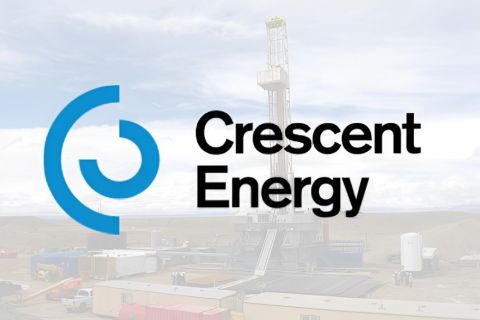Inflationary pressures, rising interest rates and supply chain woes wreaked havoc on some renewable energy players in 2023, but the outlook looks promising for 2024.
Business strategies are expected to evolve, technologies will move toward commercialization and improved economics could make for some enticing buying opportunities, analysts at energy intelligence firm Enverus told Hart Energy.
“Some of these technologies have been challenged, in the past, to present good returns. I think going into 2024, there’s more places to look and there’s some interesting places to put capital to work,” Ian Nieboer, head of energy transition research for Enverus, told Hart Energy, “and there’s probably more capital available to participate in that.”
A focus on reducing emissions and increasing the use of renewables to slow global warming is expected to stick around as companies target net-zero goals. Easing inflation and interest rates are expected to improve economics in the U.S. as innovators push forward with transition technologies—and clarity emerges on parts of the Inflation Reduction Act (IRA), further stimulating growth in lower carbon technologies.
Solar and wind energy, for example, are expected to lead growth in U.S. power generation this year and in 2025, according to the U.S. Energy Information Administration. Solar power generation could reach 286 billion kilowatt-hours (kWh) in 2025, up 75% from 163 billion kWh in 2023. Wind power generation could rise 11% to 476 billion kWh.
Looking forward, Enverus sees more stacking of energy transition technologies as companies look to add potential revenue streams by building on their core expertise.
Stacking technologies
Natural pairings could become dominant pairings in the coming year and beyond.
“What we’ve seen thematically is more and more business models that require multiple revenue streams or multiple technologies that let you access different parts of the market,” Nieboer said. “Good examples are utility-scale solar being paired up with battery storage.”
Another is blue hydrogen, which is effectively gray hydrogen production with a carbon capture and storage component, he added.
“Combining these things in a way that is interesting and compelling generally leads to better economics on balance. In our view, [in] 2024 and beyond, many of the scale business models will actually require multiple of these components to come together to be really compelling.”
The International Energy Agency estimated that clean energy investment would rise to about $1.7 trillion in 2023. Clean energy investment continues to grow, Nieboer said, noting technologies like battery storage, once considered niche, are now mainstream.
Plus, “you’ve got the IRA kicking in. You’ve got some of these newer things around CCUS and hydrogen where you can actually start to see capital being deployed.”
The industry is also expected to see oil and gas companies focus more on reducing their emissions. “They’re trying to be better actors on their own, but also because of greater scrutiny, stronger policies, more pressure from the regulatory side,” Nieboer said, adding there could also be more interest in carbon capture and storage. “It’s sort of adjacent. It fits. It can be a complement to some of the underlying operations.”
‘Commercialization horse race’
Geothermal energy has not quite taken off everywhere, including in the U.S., but the sector celebrated some successes in 2023. The year 2024 could prove to be a turning point.
Using oil and gas horizontal drilling techniques to help capture geothermal energy, startup Fervo Energy proved the commercial viability of its drilling technology. Leaning on proving oil and gas technologies along with geothermal baseload expertise, Sage Geosystems also geared up to scale its energy storage technology after a commercial pilot showed its cost-competitiveness and efficiency. Both companies have backing from oil and gas sector companies such as Devon Energy and Nabors Industries Ltd.
RELATED
Fervo Energy Claims Geothermal Breakthrough with Nevada Pilot Project
Sage Geosystems 'Revolutionizes' Grid with Energy Storage
Enverus forecasts geothermal is among the emerging technologies that will enter commercialization in 2024.
“As a technology, it fits in the mode of a typical E&P where you’re used to drilling wells, moving molecules through the subsurface one way or the other direction,” Nieboer said, noting it is still an early stage technology. “I don’t think you’re going to see a rapid take off like solar is going to be in 2024.”
Another technology in the so-called “commercialization horse race” is direct lithium extraction (DLE). DLE is oilfield adjacent—due to brine generation during completion or production—and Nieboer said the industry could see more interest and activity around the technology.
RELATED
Exxon Mobil Aims to Start Lithium Production by 2027
Exxon Mobil Corp. last year announced plans to drill about 10,000 ft underground to access lithium-rich saltwater in the Smackover region. It will then use the DLE process to separate lithium from the saltwater, which will be reinjected to the reservoir. The extracted lithium will be converted onsite into battery-grade material.
Improving inflation, interest rates
Enverus also said improving inflation and interest rates will lead to “compelling buying opportunities,” including in the residential solar supplier market.
“There was a ton of pressure and probably continues to be. Think about how heavily financed these projects are,” he said.
Higher interest rates and supplier delays were partly to blame for some U.S. wind developers’ decisions to halt some offshore wind developments and seek contract renegotiations. Danish wind developer Ørsted, for example, booked about $4 billion in impairment charges for third-quarter 2023.
Higher interest rates also impacted other energy sectors, including residential solar.
Going into 2024, with apparent stability in interest rates, a bounce back is expected.
“It was a really bad year for a lot of the equities tied to these particular technologies. … We see ‘24 as one that probably improves, and we would expect to see these companies perform better in the market,” Nieboer said.
However, like any outlook, there are always factors or circumstances that can derail expectations. The energy transition themes for 2024 include continued elevated rates, macroeconomic pressure impacting capital availability, uncertainty about the application of tax credits and broader geopolitical risk, as well as the potential for supply chain disruptions.
“We’re calling ‘24 as a year of probably improvement in a lot of places or dimensions that have been challenged, but there’s all kinds of tail risks that could defer, delay or impact that,” Nieboer said.
Recommended Reading
Kissler: OPEC+ Likely to Buoy Crude Prices—At Least Somewhat
2024-03-18 - By keeping its voluntary production cuts, OPEC+ is sending a clear signal that oil prices need to be sustainable for both producers and consumers.
Canadian Natural Resources Boosting Production in Oil Sands
2024-03-04 - Canadian Natural Resources will increase its quarterly dividend following record production volumes in the quarter.
Buffett: ‘No Interest’ in Occidental Takeover, Praises 'Hallelujah!' Shale
2024-02-27 - Berkshire Hathaway’s Warren Buffett added that the U.S. electric power situation is “ominous.”
Uinta Basin: 50% More Oil for Twice the Proppant
2024-03-06 - The higher-intensity completions are costing an average of 35% fewer dollars spent per barrel of oil equivalent of output, Crescent Energy told investors and analysts on March 5.
Keeping it Simple: Antero Stays on Profitable Course in 1Q
2024-04-26 - Bucking trend, Antero Resources posted a slight increase in natural gas production as other companies curtailed production.






